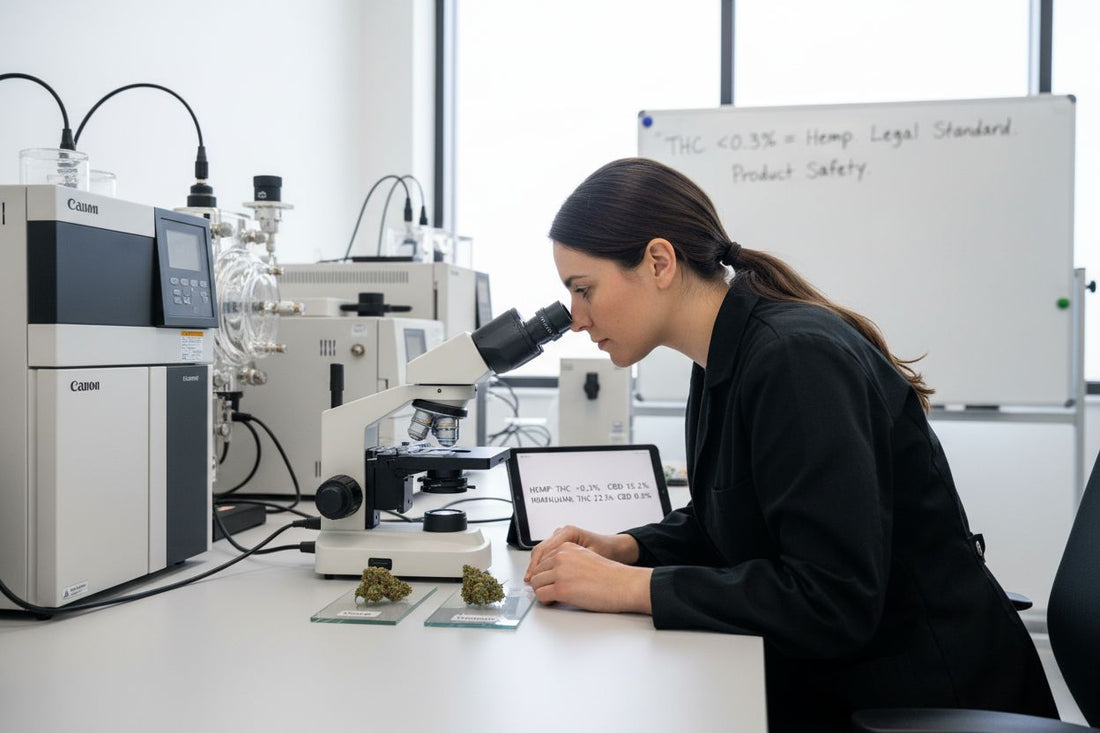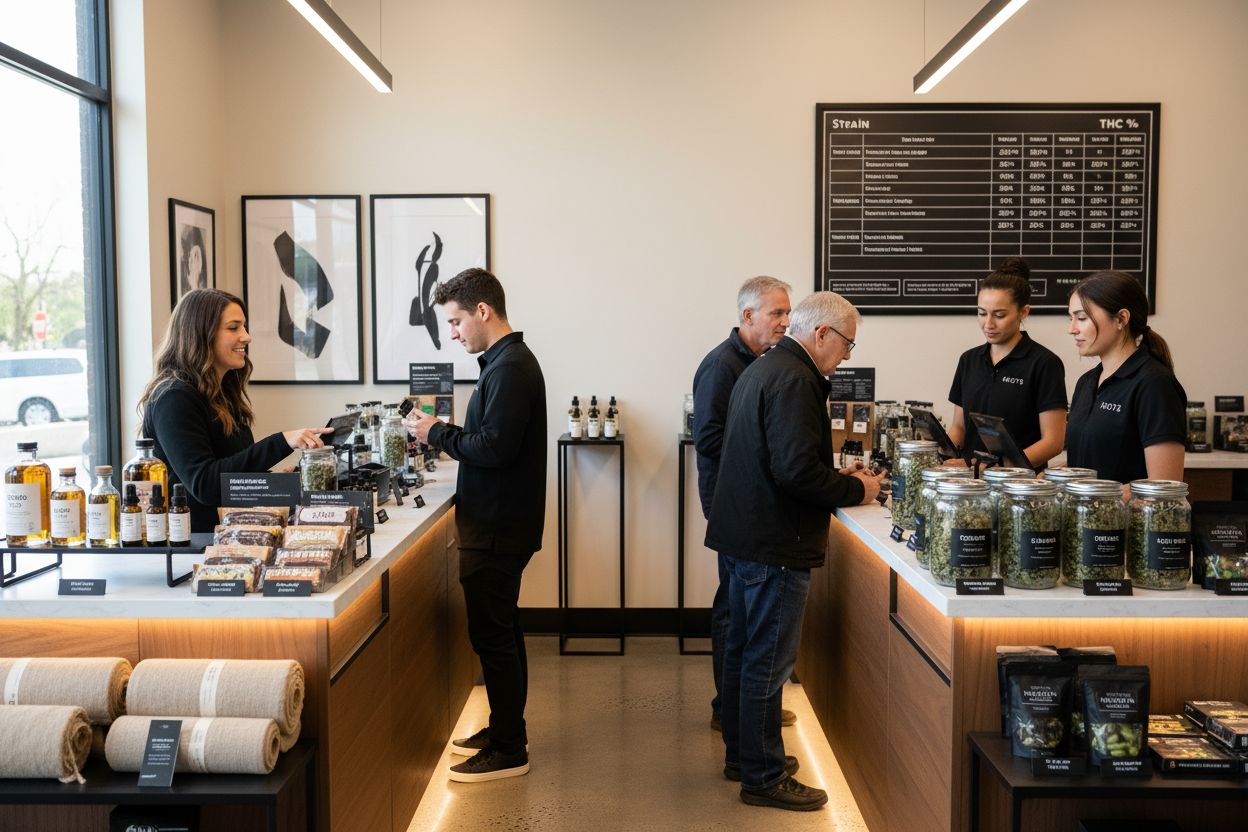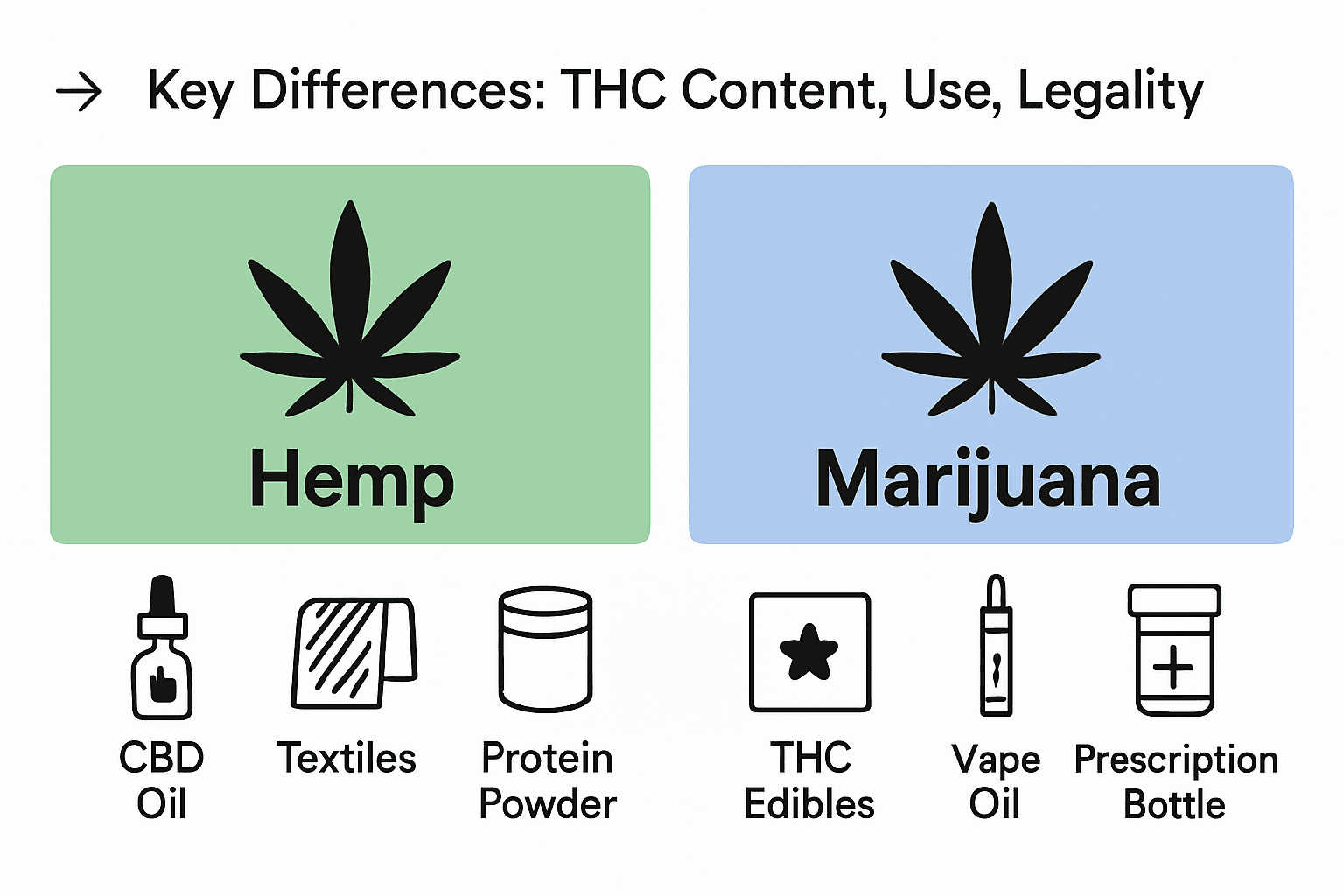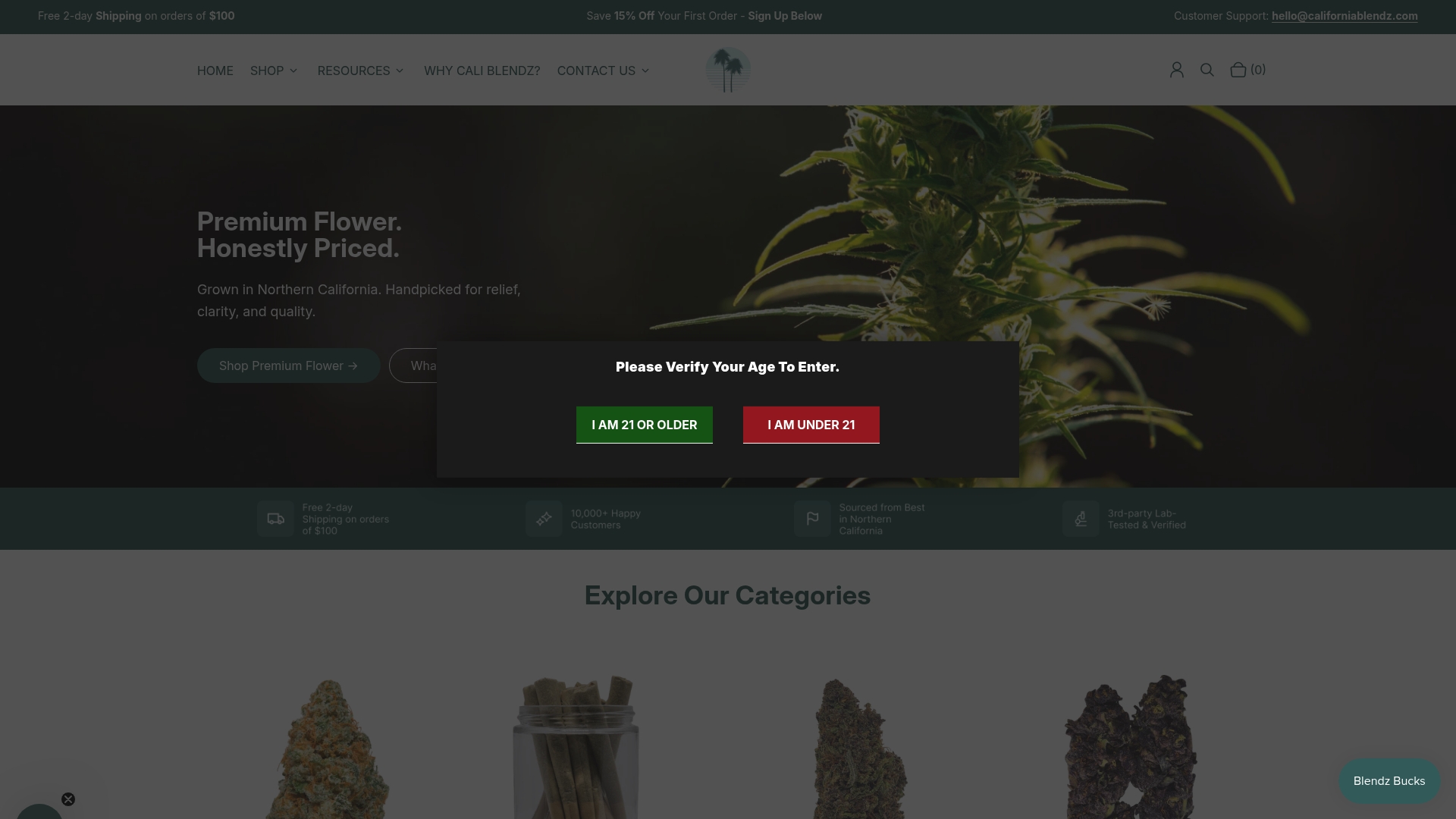Hemp Flower vs Marijuana: Everything You Need to Know
Written by Trevor

Did you know that the legal difference between hemp and marijuana depends mainly on a single number? Cannabis containing 0.3 percent THC or less is classified as hemp while anything above that is considered marijuana. This small detail shapes everything from farm regulation to product safety, making it easy for consumers to get confused. Understanding what sets these cannabis varieties apart can help you make smarter choices about the products you use and the laws that impact them.
Key Takeaways
| Point | Details |
|---|---|
| Hemp vs. Marijuana | Hemp contains less than 0.3% THC and is primarily used for industrial and wellness products, while marijuana has higher THC levels that induce psychoactive effects for recreational or medical use. |
| Legal Distinctions | Hemp is federally legal across the U.S., whereas marijuana’s legality varies by state, remaining federally illegal as a Schedule I controlled substance. |
| Terpene and Cannabinoid Profiles | Hemp is rich in CBD with minimal THC, while marijuana features significant THC levels; both differ in terpene profiles which influence their respective effects and uses. |
| Health and Safety Considerations | Consumers should be aware of potential health risks associated with THC consumption, including cardiovascular concerns, and are encouraged to consult healthcare professionals before use. |
Table of Contents
- Defining Hemp Flower And Marijuana
- Key Cannabinoid And Terpene Differences
- Legal Status Across The United States
- Health Benefits And Common Uses Compared
- Risks, Side Effects, And Safe Usage
Defining Hemp Flower and Marijuana
When it comes to cannabis, the terms “hemp” and “marijuana” are often used interchangeably. But they’re not the same. Cannabis is the plant species that includes both hemp and marijuana, distinguished primarily by their chemical composition - specifically their tetrahydrocannabinol (THC) content.
According to research from Healthline, the critical legal distinction is the THC percentage. Hemp is defined as cannabis containing 0.3% THC or less by dry weight - an amount too low to produce intoxicating effects. In contrast, marijuana refers to cannabis varieties with higher THC levels capable of generating psychoactive experiences. This seemingly small difference dramatically impacts how these plants are cultivated, regulated, and used.
Our comprehensive guide on hemp legality provides deeper insights, but here are the key characteristics:
- Hemp: Industrial cultivar with high CBD, minimal THC
- Marijuana: Recreational/medical cultivar with significant THC content
- THC Levels: Hemp < 0.3%, Marijuana 2% - 20%+ THC
From industrial applications to wellness products, these cannabis varieties serve distinctly different purposes. Hemp finds use in textiles, nutrition, and CBD products, while marijuana primarily serves recreational and medical consumption needs. Understanding these nuances helps consumers make informed choices about cannabis-derived products.

Here’s a comparison of hemp and marijuana flowers and their key characteristics:

| Feature | Hemp Flower | Marijuana Flower |
|---|---|---|
| THC Content | < 0.3% | 2% - 30%+ |
| CBD Content | High | Variable, usually lower |
| Psychoactivity | Non-psychoactive | Psychoactive |
| Main Uses | Industrial Nutrition CBD products |
Recreational Medical consumption |
| Legal Status (U.S.) | Federally legal | Varies by state; federally illegal |
| Notable Terpenes | Myrcene β-Caryophyllene Limonene |
Myrcene Limonene Linalool |
Key Cannabinoid and Terpene Differences
Cannabinoids and terpenes are the chemical compounds that define the unique characteristics of hemp and marijuana flowers. While they might seem similar, their composition dramatically influences effects, aroma, and potential therapeutic benefits. Learn more about cannabis terpenes to understand their complex interactions.
According to research from BC Media Chronic, the primary difference lies in cannabinoid concentration. Hemp flower is characterized by high CBD and minimal THC (under 0.3%), rendering it non-psychoactive. In contrast, marijuana flower contains significantly higher THC levels ranging from 5% to 30%, which produces the characteristic “high” associated with cannabis consumption.
Terpene Profile Variations
Research published in PubMed reveals hemp contains a diverse array of terpenes, each contributing unique properties:
- Myrcene: Potential sedative effects
- β-Caryophyllene: Anti-inflammatory properties
- α-Humulene: Appetite suppression
- α-Pinene: Potential respiratory support
- Limonene: Mood enhancement
- Linalool: Potential anxiety reduction
These terpene concentrations vary based on plant genetics and growth stage, creating a complex chemical profile that influences aroma, flavor, and potential therapeutic outcomes. Understanding these nuanced differences helps consumers make informed choices about cannabis-derived products.
Legal Status Across the United States
Navigating the legal landscape of hemp and marijuana can feel like walking through a complex maze. Federal law and state regulations create a patchwork of legal considerations that can confuse even seasoned cannabis consumers. Our comprehensive guide on hemp legality breaks down these intricate legal nuances.
According to Wikipedia’s research on cannabis legality, the federal stance remains clear yet complicated. Hemp - defined as cannabis with 0.3% THC or less - is federally legal, while marijuana remains a Schedule I controlled substance. Interestingly, medical cannabis has been legalized in 40 states, and recreational use is permitted in 24 states, creating significant variation in legal access across different jurisdictions.
Emerging Regulatory Challenges
Recent developments highlight the evolving legal landscape. As reported by Reuters, hemp-derived intoxicating products like delta-8 THC have proliferated under the 0.3% THC loophole. However, both federal and state governments are actively working to tighten regulations:
- Federal proposals seek to redefine hemp
- Some states have already banned or restricted intoxicating hemp products
- Proposed legislation aims to limit combined THC levels
These ongoing legal shifts underscore the importance of staying informed about current cannabis regulations. Consumers and businesses must remain vigilant and adaptable as laws continue to evolve around hemp and marijuana products.
Health Benefits and Common Uses Compared
Hemp and marijuana might originate from the same plant species, but their applications are remarkably diverse. Explore the exciting potential of cannabis-derived products to understand their wide-ranging utility beyond traditional consumption.
According to Wikipedia, hemp is an incredibly versatile resource with numerous industrial applications. Its sustainable growth and rapid cultivation make it a remarkable agricultural product. Hemp’s industrial uses include:
- Textile production
- Biodegradable plastics manufacturing
- Paper production
- Clothing
- Building insulation
- Nutritional food products
- Animal feed
Therapeutic Applications
As reported by Zoe Therapeutics, the medicinal potential of these cannabis varieties differs significantly. Marijuana, with its high THC content, is often utilized for managing chronic conditions such as:
- Chronic pain relief
- Nausea treatment
- Anxiety management
Hemp flower, conversely, is predominantly used to produce CBD products that offer therapeutic benefits without psychoactive effects. Its nutritionally rich seeds provide complete protein and high fiber content, making it a valuable dietary supplement. The key distinction lies not just in chemical composition, but in the nuanced ways these plants can support human wellness and industrial innovation.
Risks, Side Effects, and Safe Usage
Cannabis consumption comes with potential health considerations that every user should understand. Learn about potential medication interactions to ensure safe and responsible use of hemp and marijuana products.
A groundbreaking study published in JAMA Cardiology reveals significant cardiovascular concerns associated with THC consumption. Marijuana users demonstrated reduced vascular function compared to non-users, indicating potential heart risks from both smoking and consuming THC edibles. This research underscores the importance of understanding the physiological impacts of cannabis use.
Regulatory and Safety Concerns
According to research from the Baker Institute, the current regulatory landscape for hemp-derived products presents unique challenges:
- Potency Inconsistencies: Hemp products can contain high total THC doses
- Unintended Intoxication: Large hemp-derived edibles may exceed regulated marijuana market limits
- Regulatory Gaps: Some states have implemented per-serving milligram caps to address potency concerns
Responsible cannabis consumption requires careful consideration of individual health status, potential interactions with medications, and understanding personal tolerance levels. Always consult healthcare professionals before incorporating cannabis products into your wellness routine, and start with low doses to assess individual response and minimize potential side effects.
Discover the Difference with California Blendz
Understanding the unique qualities of hemp flower and marijuana can leave you searching for safe, effective products that match your wellness goals without confusion or legal concerns. At California Blendz, we are here to help you find relief, relaxation, and targeted effects through our carefully curated The Founder’s Collection. Our offerings are transparently sourced, lab-tested, and always compliant with federal regulations, addressing the worries about product safety, potency, and legality discussed in this article.

Choose products informed by science and crafted for your peace of mind. Shop The Founder’s Collection or explore premium flower in The THCa Prestige Vault, and empower your experience with a trusted retailer. Visit California Blendz now for fast shipping, detailed info, and access to the very best the Emerald Triangle offers.
Frequently Asked Questions
What is the difference between hemp flower and marijuana?
Hemp flower contains less than 0.3% THC and is non-psychoactive, while marijuana flower has higher THC levels (usually between 2% to 30% or more) that produce psychoactive effects.
What are the main uses of hemp flower?
Hemp flower is primarily used for industrial applications, nutrition, and producing CBD products. It is beneficial for wellness without the intoxicating effects of THC.
How do cannabinoids differ between hemp and marijuana?
Hemp is characterized by high CBD and minimal THC levels, while marijuana has a significantly higher concentration of THC, resulting in different effects and uses.
What are the potential health risks associated with marijuana use?
Research indicates that marijuana use may lead to cardiovascular concerns and reduced vascular function. Users should consider potential health risks and consult with healthcare professionals before consumption.
Recommended
- Hemp vs Marijuana: Understanding the Key Differences – California Blendz
- Understanding the Legalities of Getting Pulled Over with Legal Hemp: W – California Blendz
- Understanding Hemp Flower Legality: A Comprehensive Guide – California Blendz
- Understanding Hemp vs Marijuana Legality: Key Insights – California Blendz








